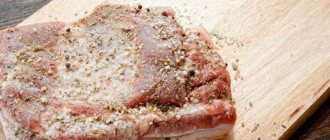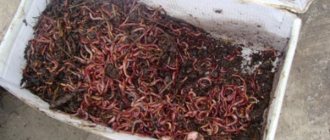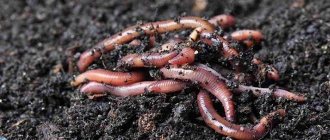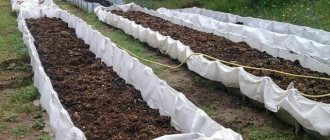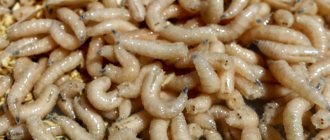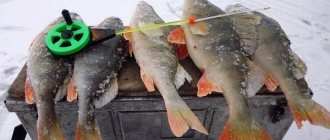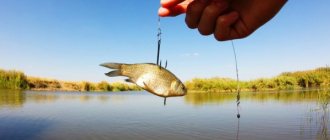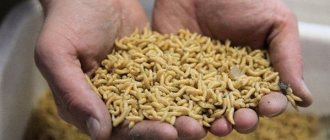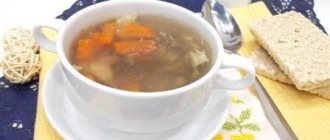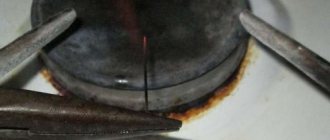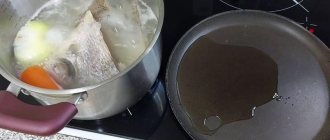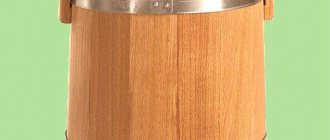In this article we will find out where the name “earthworms” came from, what they eat and what their features are. We have all noticed more than once that after a good rain on the roads and in parks you can see creatures crawling out that have a reddish tint and risk being trampled by people or animals. They are not very pleasant in appearance; small children, as a rule, are afraid of them. But, besides fear, children and adults are still interested in learning what earthworms eat. We will try to answer this question in detail in our article.
What are these creatures?
Biology classifies these representatives of the animal world as annelids. If you look closely at them, then on their thin body (50 mm in diameter, 15-30 cm in length) you can see rings, the number of which can sometimes reach 300. There are also very small worms about 2 cm. Few people know that There are giant worms that reach up to 2 meters in length. But they, like the others, are completely harmless and harmless to humans.
Features of earthworms and habitat
The body of an earthworm can reach three meters in length. However, on the territory of Russia there are mainly individuals whose body length does not exceed 30 centimeters. In order to move, the worm uses small bristles, which are located on different parts of the body. Depending on the variety, there can be from 100 to 300 segments. The circulatory system is closed and very well developed. It consists of one artery and one central vein.
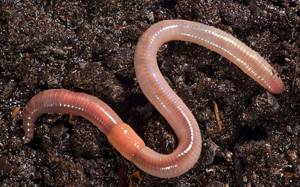
The structure of an earthworm is very unusual. Breathing is realized with the help of special hypersensitive cells. The skin produces protective mucus with a sufficient amount of natural antiseptics. The structure of the brain is quite primitive and includes only two nerve nodes. Based on the results of laboratory experiments, earthworms have confirmed their outstanding regeneration abilities. The severed tail grows back after a short period of time.
The genital organs of the earthworm are also very unusual. Each individual is a hermaphrodite. She also has male organs. Based on biological factors, all such worms can be divided into several subgroups. Representatives of one of them search for food on the surface of the soil layer. Others use the soil itself for food and emerge from the ground extremely rarely.
The earthworm is a type of annelid. Under the skin layer there is a developed muscle system, consisting of muscles of various shapes. The mouth opening, from which food enters the esophagus through the pharynx, is located on the front of the body. From there it is transported to the area of the enlarged goiter and the small size of the muscular stomach.
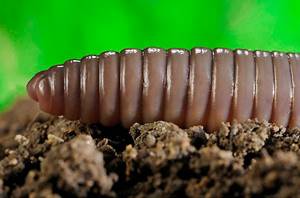
Burrowing and bedding earthworms live in places with loose and moist soil. Preference is given to moist soils of the subtropics, marshy lands and the banks of various reservoirs. In steppe areas, soil varieties of worms are usually found. Litter species live in the taiga and forest-tundra. The coniferous broad-leaved strip can boast the highest concentration of individuals.
What kind of soil do worms like?
Why do earthworms love sandy loam and loam soils? Such soil is characterized by low acidity, which is best suited for their life. Acidity levels above pH 5.5 are detrimental to the organisms of these representatives of the ringed type. Moist soils are one of the prerequisites for population expansion. During dry and hot weather, worms go deep underground and lose the opportunity to reproduce.
What are the benefits?
First, let's find out what earthworms eat in nature, and what benefits these creatures provide. The role of these individuals in nature is very great - they process all kinds of organic waste, turning them into humus. They swallow particles of biomass along with the soil and thoroughly mix them during digestion.
Humus is the organic basis of the soil; by consuming it, plants acquire the necessary nutrients. 90% of all humus is food for the existence of worms.
Origin of the species and description
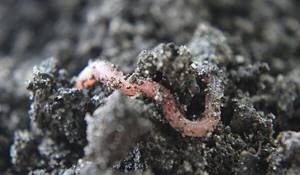
Photo: Earthworm
Lumbricina belong to the suborder of oligochaete worms and belong to the order Haplotaxida. The most famous European species belong to the family Lumbricidae, which contains about 200 species. The benefits of earthworms were first noted by the English naturalist Charles Darwin in 1882.
When it rains, the burrows of earthworms fill with water and they are forced to crawl to the surface due to lack of air. This is where the name of the animals comes from. They occupy a very important place in the structure of the soil, enriching the soil with humus, saturating it with oxygen, and significantly increasing productivity.
Video: Earthworm
In Western Europe, dried worms were processed into powder and applied to wounds to promote healing. The tincture was used to treat cancer and tuberculosis. The decoction was believed to help with ear pain. Spineless, boiled in wine, treated jaundice, and with the help of oil infused with invertebrates, they fought against rheumatism.
In the 18th century, the German doctor Stahl treated patients with epilepsy with a powder made from washed and ground worms. In Chinese folk medicine, the drug was used to combat atherosclerosis. Russian folk medicine practiced the treatment of cataracts using the liquid dripping from salted fried worms. It was dropped into the eyes.
Interesting fact: Australian Aborigines still eat large types of worms, and in Japan they believe that if you urinate on an earthworm, the causative area will swell.
Invertebrates can be divided into 3 ecological types, depending on their behavior in the natural environment:
- epigeic - do not dig holes, live in the top layer of soil;
- endogeic - live in branched horizontal burrows;
- anecic - feed on fermented organic matter and dig vertical burrows.
What do earthworms feed on in the soil?
I would like to immediately note that earthworms are omnivores. Since they feed on what is on the surface of the earth, at the same time they swallow a large amount of earth, which gives them the organic elements they need so much. In addition, the worms eat a large number of half-rotten leaves. It is important to note that earthworms do not have teeth directly in the mouth - they are located in the stomach. To receive food, the worm sucks it in with its special organ - the pharynx.

Thanks to the muscles of the body, food moves further, pushing first into the crop and then into the stomach. And already inside, food is ground into small particles by tooth-like protrusions. After this, the food is digested in the intestines by enzymes, useful substances are absorbed, and waste is excreted from the body. Since the worms have a small mouth, this explains why they eat rotten leaves and plant debris. Fresh sprouts can damage the delicate and small body of the worm. Usually such worms live under last year's leaves, where the soil is rich in humus. In such places they are provided with tasty food - pieces of plants, rotted organic matter.
Life cycle of an earthworm
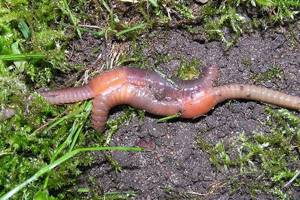
These representatives are also hermaphrodites. When mating, two individuals unite and exchange sperm, so cross-fertilization occurs. They find each other by smell. Fertilized eggs are collected in a special cocoon, wrapped in a shell of mucus. This is the same belt visible on the body of the worm. It occupies several segments in the front of the animal's body. After fertilization of the egg, the worm sheds a cocoon over its head. The worm develops in this shell and emerges as a fully formed individual. Most often, only one earthworm is born from one egg. This occurs 2-3 weeks after fertilization, and after 3 months the babies grow to the size of an adult. Newly hatched worms reach a length of 1-1.5 cm, they immediately begin to look for food and eat it. The average lifespan of these animals is from 5 to 7 years. What makes an earthworm long-lived among its own kind?
What is the process of eating?
Earthworms drag half-rotten or fresh leaves into their holes and eat them there. Usually they try to tear off small pieces, capturing the edge of the leaf between the protruding upper and lower lips. At such a moment, his throat, protruding, creates a support point for the upper lip. But if the worm encounters a wide flat leaf, it will behave a little differently. The front rings are slightly pulled into the others, thereby expanding the body. At this time, the pharynx is pressed against the plane of the leaf, then pulled back and made a little wider. As a result, a kind of “vacuum” is created in the dimple on the front of the body. The work of the pharynx at this moment is comparable to a piston, and the worm is very firmly attached to the leaf.

In addition to using leaves for food, these creatures cover the entrance to their burrow. To do this, they bring there pieces of stems, dried flowers, paper, feathers and whatever else they find. When a worm has swallowed soil for food or making burrows, it comes to the surface to empty its insides. The soil that the worm expels from the body contains a lot of secretions from the intestinal tract and therefore becomes viscous.
What are the benefits of earthworms?
But few people know about the undeniable advantages of earthworms. And some amateur gardeners believe that the earthworm harms plants by eating sprouts, seeds, and gnawing young shoots. Various methods have even been invented to destroy them (for example, freezing the soil). In fact, the vital activity of worms is very useful. No wonder the famous scientist Charles Darwin called them creatures that give flora and fauna to the Earth .
An earthworm is one of the conditions for soil fertility and normal plant development. They create passages in the soil, the depth of which is at least 60-80 cm (and in large species - up to 8 meters), promoting its natural ventilation, oxygen saturation, as well as moistening and loosening. For further nutrition, earthworms drag and store in their burrows many different plant residues, which leads to their accumulation underground, and subsequently has a positive effect on the amount of organic minerals in the soil.
What to feed the worm at home?
If you are not aware of what earthworms eat at home and what diet they need, then the following information is just for you. After all, it is necessary not only to create optimal living conditions, but also to provide the necessary nutrition for these individuals. Consider the food that can be used for an earthworm:
- Food waste (shells, peelings).
- Horse or goat manure.
- Tea leaves, coffee grounds, leaves, grass.
It is worth paying attention to what earthworms feed on and what is unacceptable for them. You need to know that the manure for feeding should not be fresh, but rotted, otherwise the worm will simply die. All this is due to the large amount of ammonia, which is found in fresh manure and is very harmful to your pets. There is no oxygen in an ammonia environment, so sometimes individuals die.
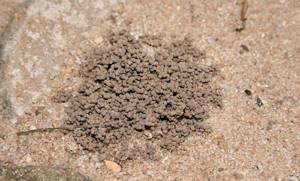
Worm feeding schedule
Feed the worms as needed, once every 1-2 weeks. The substrate is introduced into the composter in layers, laying the fresh one on top of the already processed one (it is necessary to leave free space on the surface for air access). Until the pets have eaten the previous batch, a new one is not added - excess food acidifies the substrate and impedes gas exchange in the composter.
The worm consumes a volume of food per day equal to its own weight. The feeding rate is calculated from this indicator. Worms process layers of substrate, moving from the lower tier to the upper, “edible” one. When resettling the livestock, the breeder removes the inhabited layer of compost along with the worms and transfers them to prepared worm pits. The lower layer is the waste of pets, for the sake of which people engage in vermicultivation.
The feeding of the worms stops with the onset of cold weather (below +4°C). Invertebrates go into the ground and hibernate. If vermicomposters are located in a heated room or are reliably insulated, then feeding does not stop all year round.
What not to do?
Also, when breeding pets at home, it is not recommended to feed them with fish, meat and dairy products. Also eliminate salty foods from your diet. In addition, neither canned cucumbers, nor tomatoes, nor cabbage will bring any benefit. You need to remember that feeding the worm once a week is enough. To do this, you need to crush the food and put it on the ground. The feed layer is allowed up to 10 cm.
When it comes to what earthworms eat, you need to know that they usually get used to the same food, and it will take them some time to switch to a different diet. If you decide to change their diet, then you need to do this gradually, adding new food to the usual in small portions.
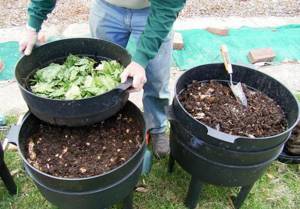
As a rule, the feed mass is placed in boxes 5-7 cm thick once every 3 weeks, depending on the number, size and appetite of the worms. When they process one layer, they soon leave it and rise higher to a new one. After processing, humus remains in the lower layer, which can be used as fertilizer.
Not only is it important for us to know what earthworms eat, but we should also remember that these individuals are inconspicuous, quiet workers who make the soil fertile. They are the most important friends and helpers for gardeners and gardeners. They need to be protected and helped in every possible way.
Worms' favorite treat
These animals prefer soil that contains large amounts of humus. The diet includes a variety of plant debris (for example, leaves fallen from trees and shrubs), including rotting ones. The worm takes them with it when it goes deeper into the lower layers of the soil. Many people are also interested in what earthworms eat on worm farms. There they are given humus and prepared food from old leaves and branches.
The obvious fact is that by “drilling” many tiny holes, the worms loosen the soil, making it possible for oxygen to enter it and enrich it with nutrients. Ultimately, this increases productivity. Experienced owners of summer cottages, taking into account the invaluable benefits of these tiny inhabitants of the soil, treat them with care and try to create conditions for reproduction and increasing numbers in gardens and vegetable gardens.
Lifestyle of worms
By their way of life, worms are nocturnal animals, and at night you can watch them swarming everywhere in large numbers, while remaining with their tails in their burrows. Stretching out, they scour the surrounding space, grab with their mouths (at the same time the worm's throat turns slightly outward and then retracts back) raw fallen leaves and drag them into burrows.
Since the body of the worms is unusually extensible, and is also covered with slightly curved back bristles, they are held in the burrow so tightly that it is very difficult to remove them from the ground without tearing them into pieces. The worms remain in their home for most of the day. An exception to this rule is sick individuals infected with parasitic fly larvae. Such animals wander on the surface of the soil during the day and die outside their burrows.
How to breed worms in the garden

These animals are found everywhere. Depending on the species, they inhabit soil layers at a depth of 10 cm to 1 meter. Since it is not difficult to breed worms in the garden, they are often grown in garden plots.
In order for the worms to settle in the required territory, you need:
- Dig a small hole in the ground, approximately 30-40 cm on sides.
- Place leaves, waste paper, and old newspapers at the bottom. Water generously with water or any slop containing organic residues.
- After about a week, you need to place a few worms collected in a damp place (under leaves, stones) on the prepared surface.
- After a few days, the “pets” begin to be fed. Any organic matter is suitable for these purposes: animal manure, bird droppings, food waste, vegetable and fruit skins, wet paper, bread crumbs, drunk tea or ground coffee. Feeding is carried out at least once every 2 weeks, each time covering the nursery with a 5 cm layer of food.
- The soil is regularly moistened. It is better to use settled or rain water, watering the nursery with it from a watering can. The optimal humidity for keeping earthworms is 80%.
- Twice a week, the compost heap is carefully loosened to enrich it with oxygen.
Before feeding waste to worms:
- potato;
- carrots;
- cabbage;
- beet;
- from celery, radish and radishes, etc.
In winter, you can save energy by freezing it all on the balcony. Now about the bones , for food in general, such hard material is absolutely unthinkable, since our worms will never chew them without dentures.
In order to feed it to the worms, you need to grind the bones:
- meat;
- fish;
- apricot;
- cherry;
- olive;
- peach;
- plum;
- date;
- cherry;
- from avocado,
- mango,
- nuts,
- pistachio,
- eggshells, etc.
All of them are quite hard, but in a ground state they are excellent as food for worms to grind food faster, as all birds do, which swallow small pebbles for this purpose. However, at home, you can foolishly break something - in the sense of a blender, mixer or electric meat grinder - if you try to grind all the above listed bones, hard roots and branches of plants in expensive kitchen devices.
Therefore, we collect such food separately and burn it in the fireplace at the dacha.
But ash, chalk and sand in unlimited quantities are perfect for feeding our “suckers” not only for grinding food, but also for deoxidizing it. In a box vermifactory, at least half of the feeding should be wet waste paper. The second half includes all kitchen vegetable or fruit peelings, as well as water after washing off the remains of any food from the dishes.
What do all the worms especially love?
To further improve the appetite and love of sexually mature individuals of the “Angels of the Earth”, aphrodisiacs are highly desirable.
- coffee grounds,
- tea leaves,
- spoiled jam,
- sweet remains of flour and confectionery products,
- various meat scraps,
- fish waste,
- greasy napkins for wiping pans and pans,
- our feces,
- droppings and manure of all domestic animals and birds.
Are earthworms dangerous for people and pets?
Despite all its beneficial properties, the earthworm can pose a threat to many animals. It is a carrier of parasites. It should be borne in mind that no cases of human infection through earthworms have been identified. This invertebrate can cause infection only if it enters the body.
An earthworm can be a temporary host for the following parasites:
- Syngamidae. It poses a threat to many bird species, including domestic birds. Once in the respiratory tract of an animal, it causes attacks of suffocation, which often leads to the death of the owner. Most often, death is seen in young individuals. The disease caused by these parasites is called syngamosis. Turkeys and starlings are especially affected by it.
- Metastrongylids (Metastrongylus). This parasite develops only inside pigs and is the causative agent of a dangerous disease - metastrongylosis. Causes respiratory dysfunction and also poisons the host's body. Often leads to the death of piglets.
- Capillaria nematodes. It is the causative agent of capillariasis and poses a serious threat to birds. This disease is extremely similar to syngamosis.
- Porrocaecum crassum nematodes. It parasitizes the small intestine of some waterfowl. Causes porrocecosis. Death occurs due to blockage of the intestine and rupture of its wall. The disease most often occurs in young animals. Porrocecosis is extremely dangerous for ducks.
Less commonly, earthworms are temporary hosts for some species of tapeworms. However, in most cases they do not pose a significant threat.
It is important to understand that exterminating earthworms is not a solution. It is necessary to fight against the parasites themselves that have gotten inside domestic animals, and you also need to monitor the condition of pastures.
